The Line Of Succession
Did you know that King Charles III is a direct descendant of William the Conqueror? That’s right, the lineage of the British royal family goes back nearly 1,000 years, all the way back to 1066. As you can imagine, this line of rulers has been involved their fair share of bizarre occurrences—so let’s go back to the beginning and look at the weirdest parts of each monarch’s reign.

William I
In his final years, William I—AKA William the Conqueror—was not in good health. The once-strapping ruler ballooned to massive proportions. One day, his horse reared up in battle, slamming his gut against the pommel of his saddle and rupturing his intestines.
William spent the next several days in agony before finally succumbing to his injuries—but somehow, the most horrific part was yet to come.
 National Portrait Gallery, Wikimedia Commons
National Portrait Gallery, Wikimedia Commons
William I’s Funeral
Many came to pay respects at William the Conqueror's funeral—but no one expected the gruesome scene that played out. Unfortunately, his bloated remains wouldn't fit in the stone tomb his attendants had built for him. The priests tried to simply stuff him inside, and they regretted it almost instantly.
His abdomen burst, sending putrid guts everywhere. The stench was so terrible, mourners fled the church in horror.
 National Trust, Wikimedia Commons
National Trust, Wikimedia Commons
William II
People thought William I was bad, but his son William II took cruelty to the next level. In August 1100, William left his castle to go on a hunting trip. Little did he know, he was riding into his darkest day. Sometime during the trip, a stray arrow struck William in the chest. Accidents happen—but his companions’ reaction was brutal.
 Matthew Paris, Wikimedia Commons
Matthew Paris, Wikimedia Commons
William II’s Dark End
Whether out of fear or disdain, King William II’s “friends” fled, leaving him to die alone in England's New Forest. Most people believe that the deadly arrow was an accident, but some historians believe it was an assassination by his political enemies.
 Saforrest, CC BY-SA 3.0, Wikimedia Commons
Saforrest, CC BY-SA 3.0, Wikimedia Commons
Henry I
William the Conqueror’s fourth son, Henry I, never should have touched the throne—but thanks to his brother’s untimely passing, he ended up on the throne. And like his brother, he was unbelievably cruel—even to his dozens of illegitimate children.
 Georgemiller381, CC BY-SA 4.0, Wikimedia Commons
Georgemiller381, CC BY-SA 4.0, Wikimedia Commons
Henry I’s Brutal Punishment
When Henry’s daughter's husband blinded the son of a man named Harnec, they brought the case to the king. They were family, but they'd embarrassed him, so Henry was utterly ruthless: Henry allowed Harnec to blind his own grandchildren and cut off their noses.
Devastated, Henry's daughter then tried to kill him with a crossbow. Talk about family drama.
 Unknown Author, Wikimedia Commons
Unknown Author, Wikimedia Commons
Stephen of Blois
Stephen of Blois was the son of one of William the Conqueror’s daughters, and was King of England from 1135 to 1154. But long before that, in 1120, when Henry I ruled, Stephen was supposed to join Henry’s family and court on a boat from France to England. But as the ship was about to depart, Stephen fell ill with some stomach issues. Toilet troubles, if you will.
As a result, he missed the departure—and it likely saved his life.
 Unknown Author, CC BY-SA 4.0, Wikimedia Commons
Unknown Author, CC BY-SA 4.0, Wikimedia Commons
Stephen of Blois’s Life-Saving Illness
The White Ship departed from France, but the overloaded boat sank before it could reach its destination. Among those who went down with the ship was Henry I’s only legitimate son, the heir to the throne, William Adelin. If Stephen hadn’t had “bad bathroom,” so to speak, he would have been on the ship, likely wouldn’t have survived…and never would’ve become king.
 Unknown Author, Wikimedia Commons
Unknown Author, Wikimedia Commons

History's most fascinating stories and darkest secrets, delivered to your inbox daily.
Henry II
Henry II’s marriage to Eleanor of Aquitaine was deeply unhappy, and in 1173, it all came to a head when she helped her sons plot a bloody revolt against their father. When Henry found out, his response was utterly chilling.
 National Portrait Gallery, Wikimedia Commons
National Portrait Gallery, Wikimedia Commons
Henry II’s Vengeful Side
Nothing set Henry off faster than a perceived betrayal—and so, Henry was particularly livid at his wife Eleanor. He imprisoned her in various castles for 16 years, using her as collateral to make sure his sons never rebelled again. She was only released when he died.
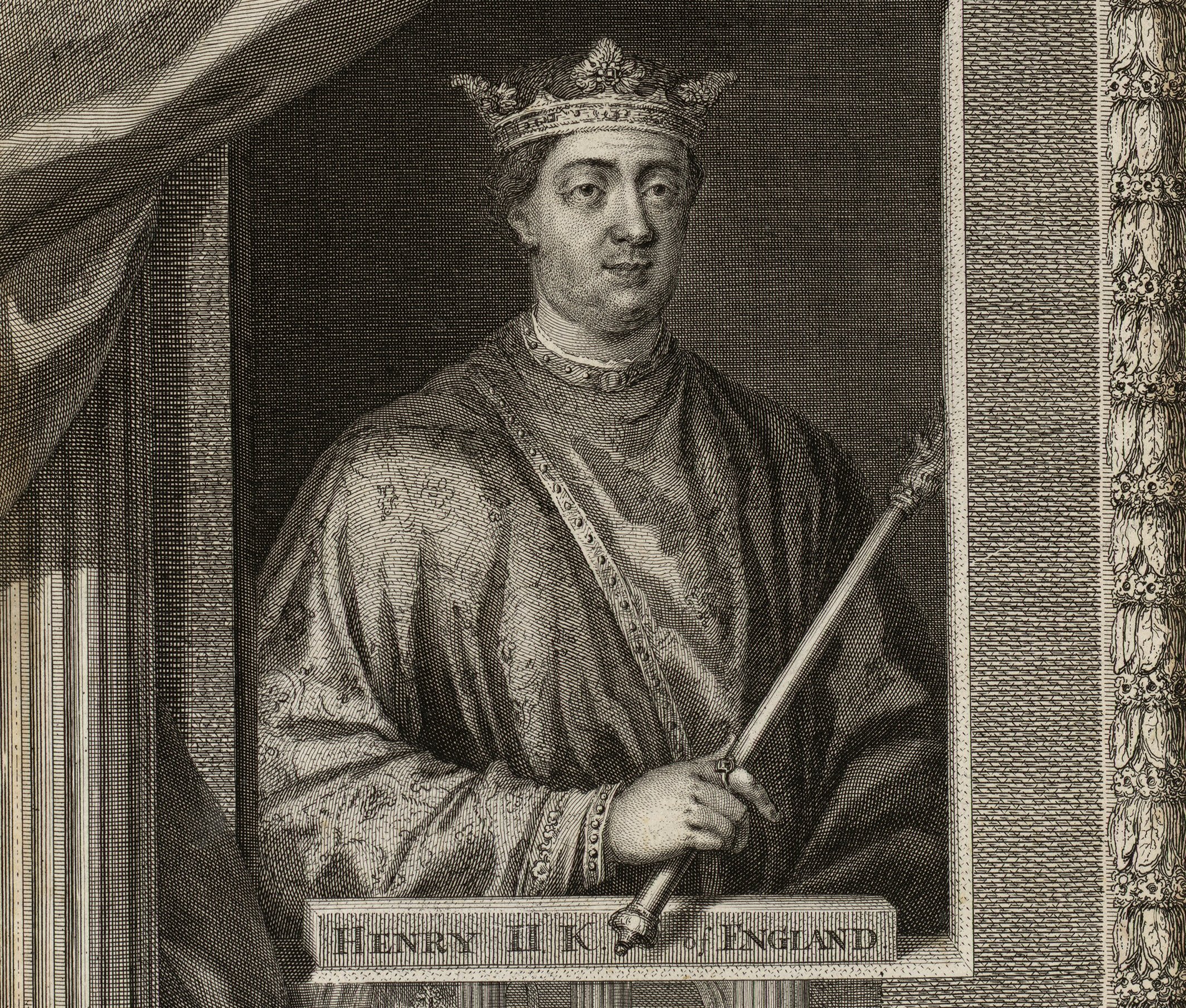 Thomas Pennant, Wikimedia Commons
Thomas Pennant, Wikimedia Commons
Richard I
Also known as “Richard the Lionheart,” Richard I was killed by a lone arrow in 1199. Just before dying, Richard met his murderer—and saw he was just a boy. When the King asked why he did it, that mere boy spat out a disturbing reply.
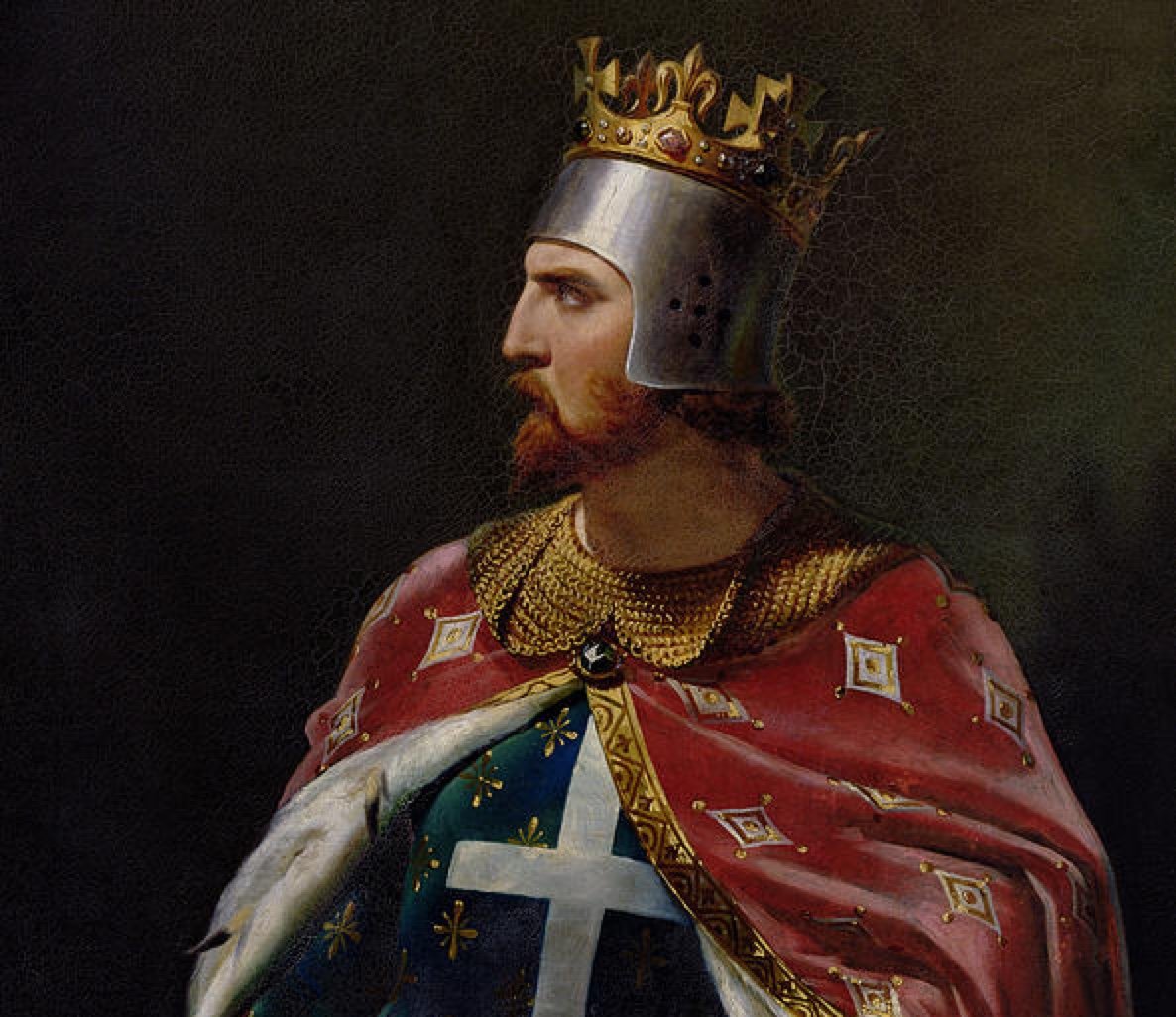 Merry-Joseph Blondel, Wikimedia Commons
Merry-Joseph Blondel, Wikimedia Commons
Richard I Was A Victim Of Vengeance
The boy revealed that Richard had killed his father and brothers, and he was seeking his revenge. Though he faced certain execution, Richard's final words to him were an act of mercy: "Live on, and by my bounty behold the light of day". He sent the boy away and gave him 100 shillings.
Of course, Richard couldn’t control what happened after he passed on—when his courtiers made sure to punish the boy against his wishes.
 Unknown Author, Wikimedia Commons
Unknown Author, Wikimedia Commons
John
King John was irritable, petty, and cruel—but it was his utterly scandalous bedroom habits that cost him everything in the end. He took mistresses much like many medieval kings, but John had a particular taste.
 Dulwich Picture Gallery, Wikimedia Commons
Dulwich Picture Gallery, Wikimedia Commons
The Last Of His Name
King John I preferred noblewomen. Or, more specifically, married noblewomen. So not only did he tax his barons into the ground and throw them behind bars without reason, but he also slept with their wives. Is it any wonder they dragged this despicable king off of his throne—and that no other kings have taken his name since?
 Matthew Paris, Wikimedia Commons
Matthew Paris, Wikimedia Commons
Henry III
Henry III had the longest reign in medieval history. He was a breath of fresh air after his predecessors—more concerned with piety and diplomacy than his more ruthless ancestors. And one of the results of this diplomacy was a bizarre gift from a fellow king.
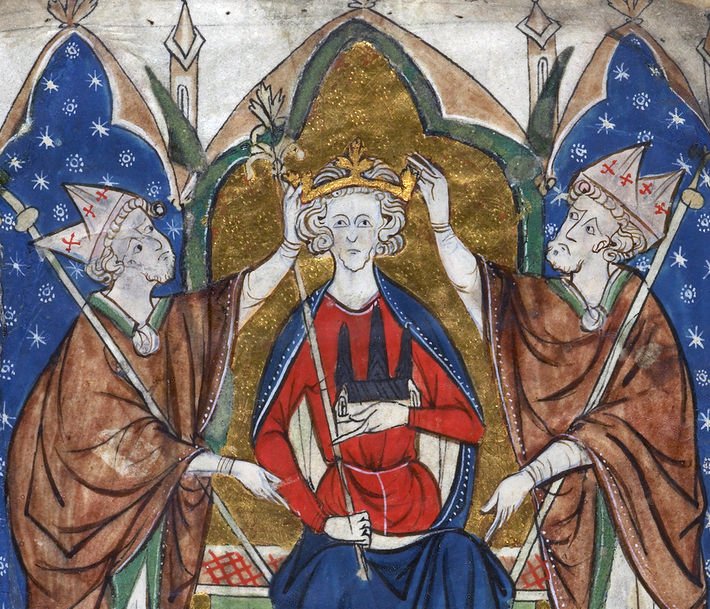 Unknown Author, Wikimedia Commons
Unknown Author, Wikimedia Commons
Henry III’s Pet
In 1252, King Haakon IV of Norway gifted Henry III a white bear—which some think was a polar bear. Henry III was a pretty good pet owner. He let the bear live in the Tower of London, and the bear got to visit the Thames every morning to swim and catch fish. What a life!
 David Hoyle, Wikimedia Commons
David Hoyle, Wikimedia Commons
Edward I
Edward I—AKA Edward Longshanks—was a return to form for English kings…which is to say he was incredibly bloodthirsty. During a siege, he decided to build a massive trebuchet to move things along a little faster. The mere sight of the weapon’s construction was enough to compel a surrender—but that wasn’t good enough for Edward.
 Unknown Author, Wikimedia Commons
Unknown Author, Wikimedia Commons
Edward’s Warwolf
Never get between a boy and his toys. Edward wasn’t just going to build a trebuchet—which got the name “Warwolf”—and not use it. Edward ignored the white flag, tried the Warwolf out, and only then finally accepted their pleas for surrender.
 Thomas Pennant, Wikimedia Commons
Thomas Pennant, Wikimedia Commons
Edward II
Edward II’s close friendships with his male courtiers—in particular, Piers Gaveston and later, Hugh Despenser the Younger—have led to speculation over the years that their relationships may have been more than platonic. Perhaps unsurprisingly, his wife turned against him, a rebellion that ended with his capture and imprisonment.
 National Portrait Gallery, Wikimedia Commons
National Portrait Gallery, Wikimedia Commons
Edward II’s Hoax
Edward passed on in his jail cell—or so people thought. Roughly a decade later, a priest sent a letter to his son claiming that Edward II had escaped, leaving the body of a porter behind to take his place and throw his enemies off the scent.
According to the letter, Edward was living as a hermit. Perhaps most shockingly, multiple historians back this account and claim that it’s true!
 Thomas Pennant, Wikimedia Commons
Thomas Pennant, Wikimedia Commons
Edward III
After his mother had his father deposed, Edward III was crowned king—but for the first years of his reign, he was nothing but a puppet for his mother and her lover. Finally, he got out from under their thumbs, and quickly proved himself a capable king. But even then, he had his quirks.
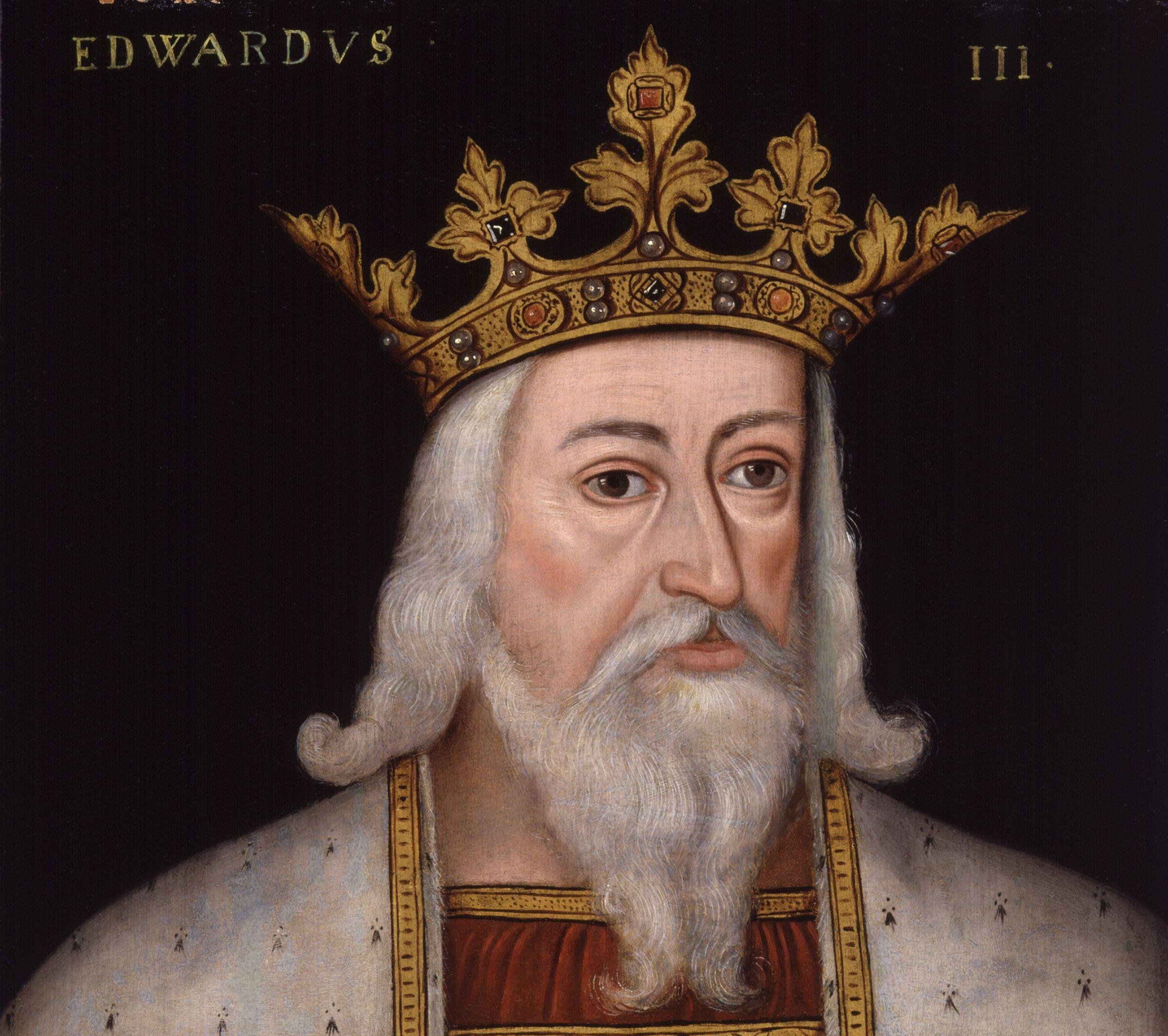 Unknown Author, Wikimedia Commons
Unknown Author, Wikimedia Commons
Edward III’s “Magic Touch”
It’s not surprising to learn that Edward III was a little weird. After all, look at his childhood. Edward actually believed he could heal his ailing subjects simply by laying his hands on them—something called the “royal touch”.
 William Bruges, Wikimedia Commons
William Bruges, Wikimedia Commons
Richard II
When Richard II was crowned king, he had fountains of wine opened up across London to celebrate. Of course, you know the saying, “In like a lion, out like a lamb…”
 Bridgeman Art Library, Wikimedia Commons
Bridgeman Art Library, Wikimedia Commons
Richard II On Display
Above all else, Richard II was a coward. He readily gave up his crown—unaware of the disturbing fate that awaited him. Henry IV simply strolled into London and snatched the crown off of Richard's head. Richard made Henry promise to spare his life—but promises can be broken, and Henry had Richard executed and displayed his body in St Paul’s Cathedral.
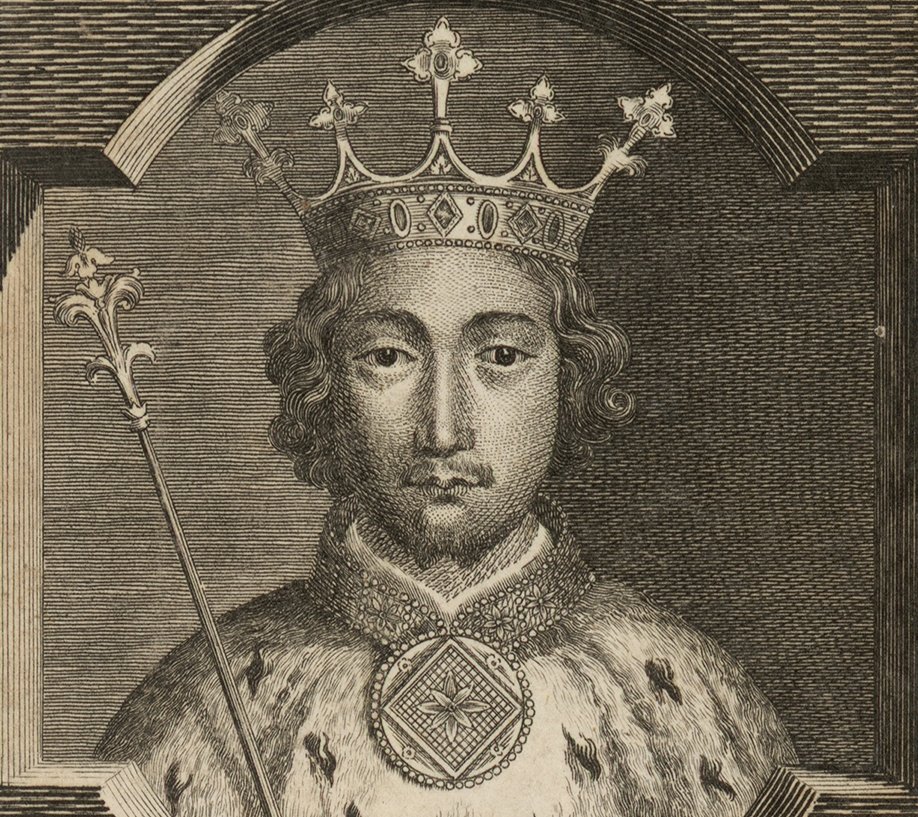 Thomas Pennant, Wikimedia Commons
Thomas Pennant, Wikimedia Commons
Henry IV
Henry IV was the first English king—no, really. Though his predecessors were kings of England, Henry IV was the first to actually speak English, as the rulers before him spoke French.
 National Portrait Gallery, Wikimedia Commons
National Portrait Gallery, Wikimedia Commons
Henry IV’s Ailments
Henry IV had a mysterious skin disease and suffered a series of acute “attacks” that left him ill. He kept a surgeon on retainer to treat him. Modern historians have argued about what it could have been: While some suspect leprosy, others say it was epilepsy. Medieval historians said the leprosy was punishment from God for his treatment of an archbishop who attempted a coup.
 Guillaume Philippe Benoist, Wikimedia Commons
Guillaume Philippe Benoist, Wikimedia Commons
Henry V
Henry once achieved a military victory so decisive that his army found themselves in an alarming position: they were outnumbered by the men they’d captured. His solution to the problem was utterly disturbing.
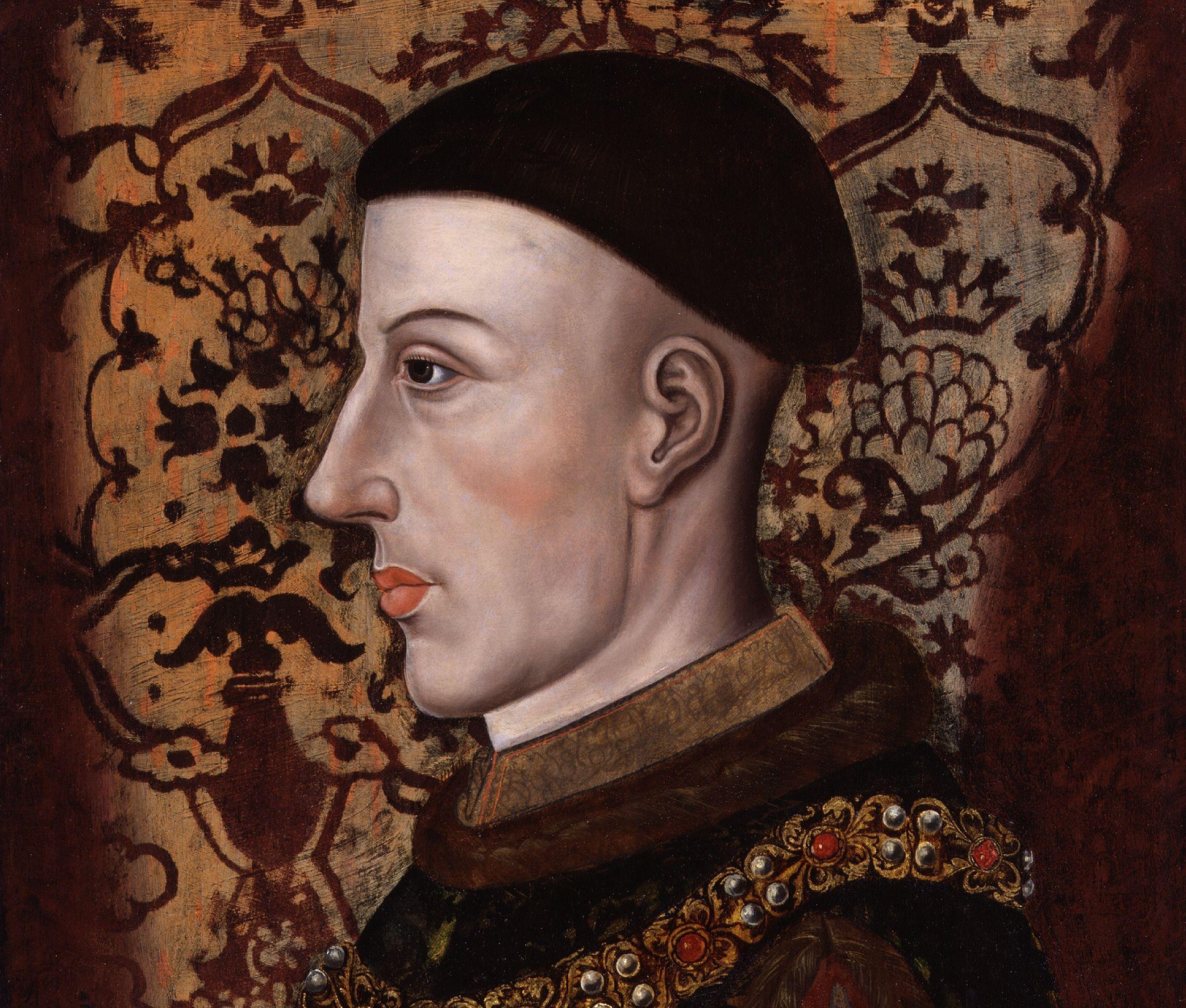 National Portrait Gallery, Wikimedia Commons
National Portrait Gallery, Wikimedia Commons
Henry V’s Not So Chivalrous Win
Henry became alarmed that the prisoners might collect weapons from the battlefield and turn on their exhausted captors. Therefore, Henry ordered the majority of the prisoners to be executed. Many of his knights refused to be a part of such unchivalrous action, but Henry ensured that the bloody deed was done regardless.
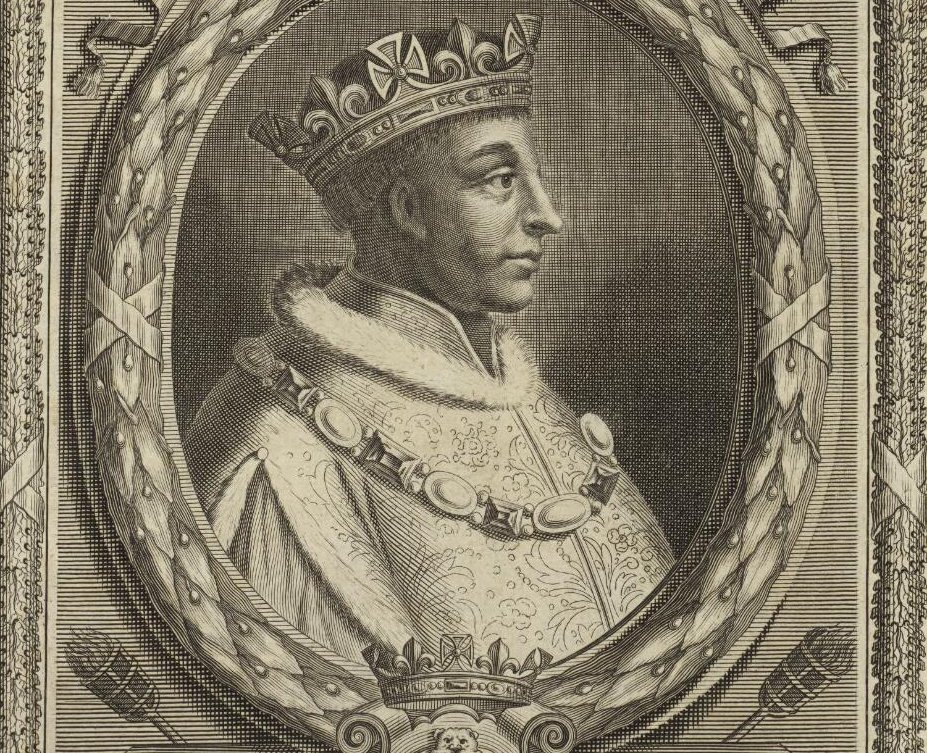 National Library of Wales, Wikimedia Commons
National Library of Wales, Wikimedia Commons
Henry VI
Henry VI was the only son of Henry V, and he was the youngest English king in history. He was just 9 months old when he was crowned king. Like child stardom, the consequences of this were disastrous.
 National Portrait Gallery, Wikimedia Commons
National Portrait Gallery, Wikimedia Commons
Henry VI’s Struggles
Unlike his ancestors, Henry VI was said to be peaceful and pensive—but he also suffered from mental breakdowns that increased in frequency as he aged. After he passed on at 50, there was a movement to canonize him based on some of the “miracles” he performed—among them, curing a man of a disease nicknamed “king’s evil”, and reviving a drowned boy and a young girl who succumbed to the plague.
 Francis Aidan Gasquet, Wikimedia Commons
Francis Aidan Gasquet, Wikimedia Commons
Edward IV
Though tall, strong, and handsome, King Edward IV had a truly disgusting habit—and he paid for it with his life.
 National Portrait Gallery, Wikimedia Commons
National Portrait Gallery, Wikimedia Commons
Edward IV’s Strange Addiction
Edward IV was a hedonist above all things, for women, drink, and food, in particular. To make sure he could feast as much as possible, Edward used emetics to be able to binge and purge and binge again. Unsurprisingly, this cycle proved to be deadly, and he fell ill and passed on in 1483.
 Unknown Author, CC BY 4.0, Wikimedia Commons
Unknown Author, CC BY 4.0, Wikimedia Commons
Edward V
Are you really a king if you were never crowned? Edward V and his brother Richard, Duke of York, were sent to the Tower of London by their uncle, Edward IV’s brother Richard, Duke of Gloucester, before the elder could be crowned king. Then, a group petitioned for the Duke of Gloucester to be crowned king. So…what happened to the young princes?
 National Portrait Gallery, Wikimedia Commons
National Portrait Gallery, Wikimedia Commons
The Princes In The Tower
After Richard, Duke of Gloucester became King Richard III, the boys were seen less and less at the Tower of London, until they eventually disappeared. To this day, their ultimate fate is still a mystery.
 Silvester Harding, Wikimedia Commons
Silvester Harding, Wikimedia Commons
Richard III
People often make jokes about Napoleon seizing power as a means to combat his insecurity over his height—but he was actually of average height. However, this trope may fit Richard III better. Due to scoliosis, he was likely under 5 feet, while his brother Edward IV was 6’4” tall.
 National Portrait Gallery, Wikimedia Commons
National Portrait Gallery, Wikimedia Commons
Richard III’s Short Reign
Richard III wasn’t just short in stature—his reign was also the shortest of all the kings on this list (not counting the young prince he imprisoned before he could be crowned king), at two years and two months. He’s also the only English king to be killed in battle on this list.
 George Vertue, Wikimedia Commons
George Vertue, Wikimedia Commons
Henry VII
Henry VII’s defeat over Richard III ended the long, brutal Wars of the Roses, making him the first Tudor king. As a counterpart to the previous fact, that made him the last English king to win his throne in battle.
 National Portrait Gallery, Wikimedia Commons
National Portrait Gallery, Wikimedia Commons
Henry VII Loved Money
Henry VII loved taxes and loved lining his coffers. He’d arranged a politically advantageous marriage between Catherine of Aragon and his first son, but when that son passed on suddenly, Catherine’s dad asked for her dowry back. Not one to let cash slip through his fingers, Henry instead proposed that he should marry the young girl. Ultimately, he married her off to his other son, the future King Henry VIII.
 Unknown Author, Wikimedia Commons
Unknown Author, Wikimedia Commons
Henry VIII
What can we say about Henry VIII that hasn’t been said? The man led a rollercoaster of a life, from his marriages and affairs to the twisted ends of said marriages and affairs. He was known for his macho bravado before those terms were ever really a thing—in fact, he once challenged the King of France to a wrestling match.
It probably wasn’t great for his ego when he lost.
 Hans Holbein the Younger, Wikimedia Commons
Hans Holbein the Younger, Wikimedia Commons
Henry VIII’s Paranoia
Despite his machismo, Henry VIII had a weak spot—he was seriously terrified of illness. Considering that he only became king because his brother succumbed to “the sweating sickness” at the age of 15, who could blame him? Henry VIII did everything in his power to avoid illness, but still suffered from smallpox and malaria before the age of 30.
 Hans Holbein the Younger, Public domain, via Wikimedia Commons
Hans Holbein the Younger, Public domain, via Wikimedia Commons
Edward IV
Henry VIII’s cherished heir, Edward IV, only reigned from the ages of 9 to 15. Because he was so young when he became king, a custom crown, fit for a tiny king’s head, was crafted specifically for him.
 Circle of William Scrots, Wikimedia Commons
Circle of William Scrots, Wikimedia Commons
Edward IV’s Revenge
Edward IV was looked after by his uncles, the Seymours—but when one of them, Thomas, shot his beloved dog, he cut him off. Later, when Thomas was on trial for treason, Edward did nothing to help him, and Thomas was ultimately executed.
 Studio of William Scrots, Wikimedia Commons
Studio of William Scrots, Wikimedia Commons
Mary I
Mary’s forces usurped the short—nine days—rule of Jane Grey, whose rights to the throne were disputed. This meant that Mary was the first undisputed Queen regnant of England. Of course, her brutal rule also earned her the nickname “Bloody Mary”.
 Antonis Mor, Wikimedia Commons
Antonis Mor, Wikimedia Commons
Mary I’s Pregnancies
Like any ruler, Mary I wanted nothing more than to have an heir to the throne, cementing her family’s right to rule. Unfortunately, this did not end well. At one point, Mary was believed to be pregnant, and entered a period of confinement about six weeks before her suspected due date. People even celebrated as it passed…but then, nothing happened. For months. Only one midwife was brave enough to tell Mary that she wasn’t actually pregnant, but actually suffering from a phantom pregnancy.
 Metropolitan Museum of Art, Wikimedia Commons
Metropolitan Museum of Art, Wikimedia Commons
Elizabeth I
Before she became the Virgin Queen, Elizabeth lived in penury after her mother’s execution. Her father, Henry VIII, ignored and neglected her so completely that Elizabeth’s guardians had to beg the king for finances to provide Elizabeth with clothes that fit her. Later, when she became queen, this led to a bizarre obsession.
 National Portrait Gallery, Wikimedia Commons
National Portrait Gallery, Wikimedia Commons
Elizabeth I’s Collection
Elizabeth was like the Imelda Marcos of dresses. She collected more than 2,000 dresses for herself, and even that wasn’t enough. She allegedly stole a dress from one of her maids of honor out of envy when she saw how good it looked.
 Steven van der Meulen, Wikimedia Commons
Steven van der Meulen, Wikimedia Commons
James I
James was King of Scotland first before ascending to the throne as King of England after Elizabeth I passed on without children. He was a descendant of Henry VII. James I had a passion for the pen and wrote numerous treatises, including ones on witchcraft, his hatred of smoking, his belief in the divine right of kings. In fact, he’s responsible for one of the best-selling books in the world—but he didn’t write it himself.
 John de Critz, Wikimedia Commons
John de Critz, Wikimedia Commons
James I’s Literary Legacy
James I sponsored a new English edition of the Bible during his rule, and that version, the King James Bible, is the best-selling version of the best-selling book in the world.
 John de Critz, Wikimedia Commons
John de Critz, Wikimedia Commons
Charles I
James I set the English throne off on a horrible track that ultimately led to the beheading of his son, Charles I, in 1649. However, that’s someone not even the craziest part of the story.
 Anthony van Dyck, Wikimedia Commons
Anthony van Dyck, Wikimedia Commons
Charles I’s Indignity
Charles I was the only English ruler to be executed ever. As if beheading the man wasn’t horrifying enough, the court had his head sewn back onto his body afterward.
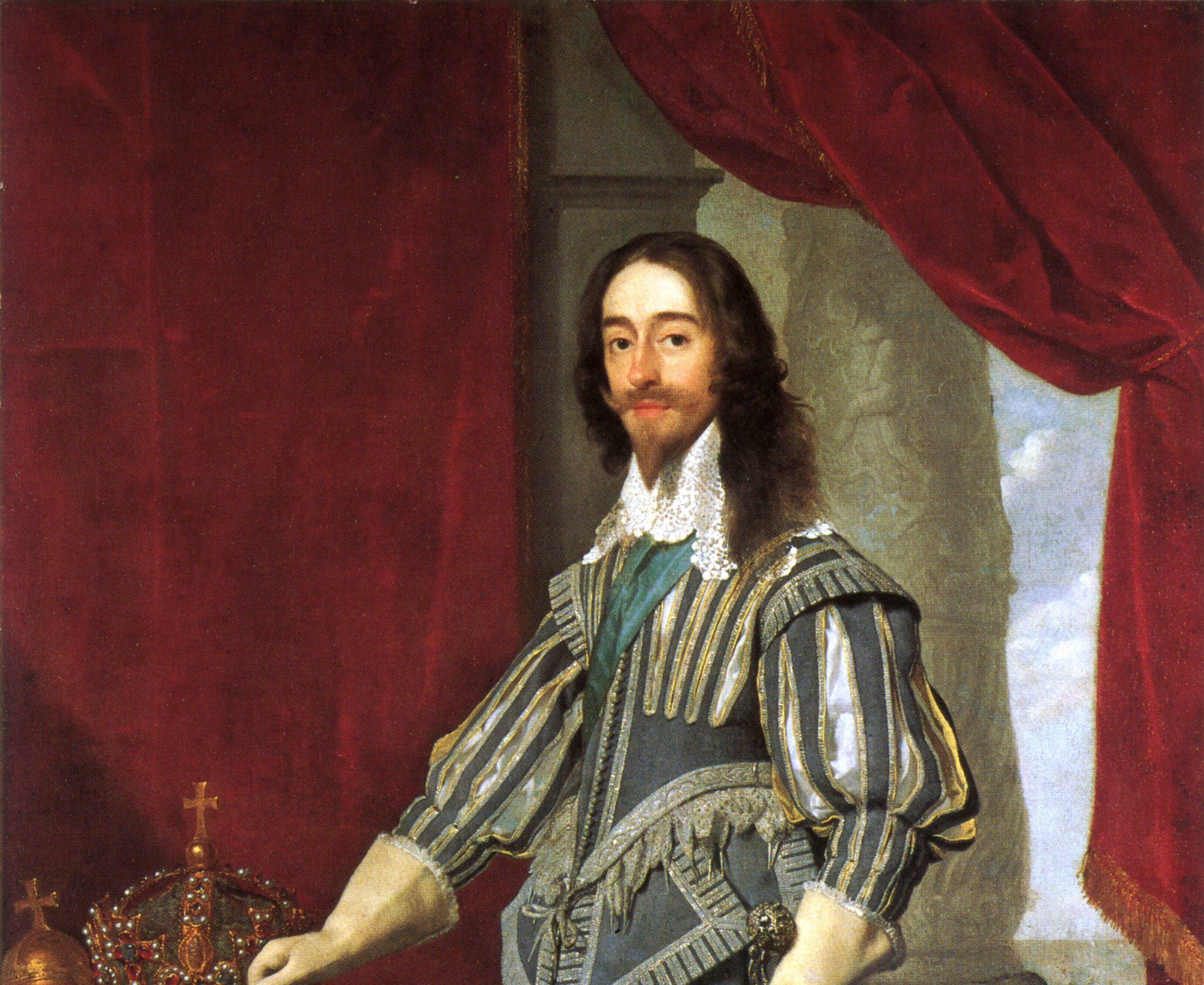 Daniël Mijtens, Wikimedia Commons
Daniël Mijtens, Wikimedia Commons
Charles II
Charles II was a prolific womanizer and had many mistresses. One of them, Nell Gwynn, was faithful for her entire life, even bearing him a son in 1670. But when the king refused to acknowledge his child, Nell suddenly turned bitter.
 John Michael Wright, Wikimedia Commons
John Michael Wright, Wikimedia Commons
Charles II And The Ultimatum
Nell demanded that Charles make the boy into an Earl. According to one source, she wore him down with incessant needling—but some historians believe the true story is much darker. There are rumors that she dangled the king’s illegitimate son out a window and threatened to drop him until Charles acquiesced.
James II
James II is generally considered a failure as a king—and yet, one of the greatest cities in the world is named after him. When the English took over New Amsterdam from the Dutch, they named it in honor of James, Duke of York, the man who later became James II. Thus, taking a cue from the Dutch, they named it New York.
 Nicolas de Largillière, Wikimedia Commons
Nicolas de Largillière, Wikimedia Commons
James II’s Secret
For years, James II hid a scandalous secret. What was he hiding? He was Catholic. While that might not sound so crazy, it actually led to a host of troubles for the embattled king, who was ultimately deposed by his own son-in-law.
 School of Peter Lely, Wikimedia Commons
School of Peter Lely, Wikimedia Commons
William & Mary
James’ daughter Mary and her husband William of Orange are the only joint rulers of England in history. However, it almost didn’t happen—Mary’s father originally wanted her to marry Louis, Grand Dauphin, heir to King Louis XIV of France.
 Unknown Author, Wikimedia Commons
Unknown Author, Wikimedia Commons
William & Mary’s Tragic Ends
What began with such great potential took a dire turn. Mary succumbed to smallpox without any heir. William didn’t remarry, and passed on after falling from his horse. Afterward, a twisted rumor spread that his horse had stumbled on an anthill.
Queen Anne
We could easily write an entire list about Queen Anne’s bizarre predilections, hobbies, choices of friends, decisions, health problems, etc. Like Queen Mary, she had a rough time with pregnancies—but unlike Queen Mary, she did actually get pregnant. 17 times. Most ended in stillbirths, with five children being born alive, and only one living past the age of 3. Sadly, even that child passed on at the age of 11.
 Charles Jervas, Wikimedia Commons
Charles Jervas, Wikimedia Commons
Queen Anne’s Tragic Troubles
Anne suffered many indignities during her rule, from her painful pregnancies to her toxic friendship with Sarah Churchill. But she faced the worst indignity of all in death. When she passed on, her body was so bloated that they had to build a custom, square coffin for her.
 Workshop of John Closterman, Wikimedia Commons
Workshop of John Closterman, Wikimedia Commons
George I
As a distant cousin, George had an unlikely rise to the throne, which earned him the name “Lucky George”. However, he had another, more insulting nickname as well: The Turnip King. This was meant to malign him as a country bumpkin type.
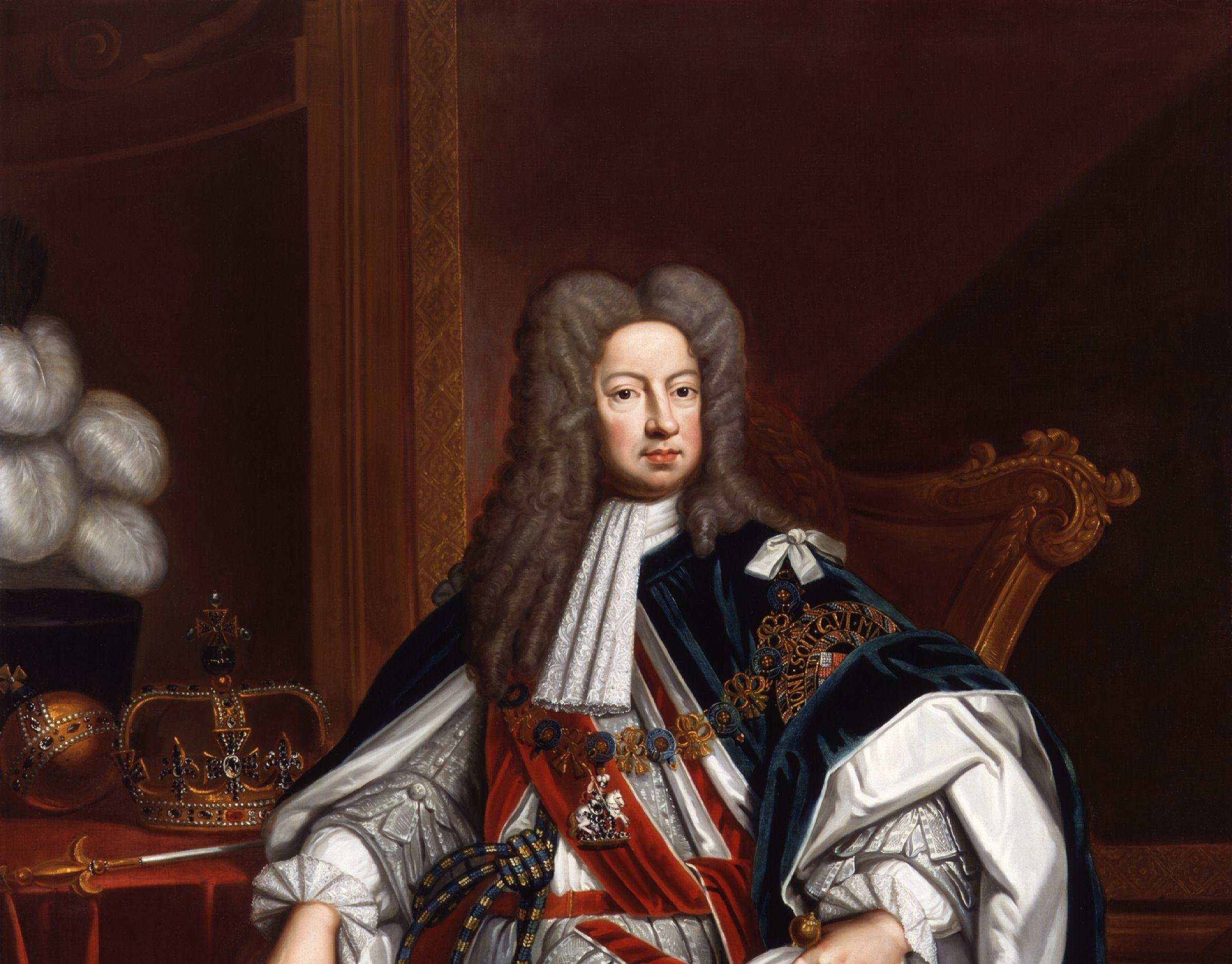 Studio of Godfrey Kneller, Wikimedia Commons
Studio of Godfrey Kneller, Wikimedia Commons
George I’s Vengeful Side
King George I hated his own son with a passion—and one day, he dealt him a betrayal so cruel, it’s impossible to forget. When the Prince of Wales angered King George, the monarch all but kidnapped the prince’s children, holding the grandbabies hostage and refusing to let his son see them.
 Workshop of Godfrey Kneller, Wikimedia Commons
Workshop of Godfrey Kneller, Wikimedia Commons
George II
George II was belligerent in the classic sense of the word—he was obsessed with battle. In fact, he was the last English monarch to lead his own troops into battle. George dreamed of dying valiantly on the battlefield. Instead, he suffered one of the most humiliating ends in history.
 Thomas Hudson, Wikimedia Commons
Thomas Hudson, Wikimedia Commons
George II’s Final Moments
Early one morning, the king's valet heard a loud crash in the royal commode. They rushed in to find George collapsed on the floor in front of the toilet. He died mere moments later. His doctor later noted that he "appeared to have just come from his necessary-stool." That's right. George II, the great warrior, pooped too hard and died on the toilet.
 Godfrey Kneller, Wikimedia Commons
Godfrey Kneller, Wikimedia Commons
George III
There are embattled kings, and then there’s George III. But instead of fighting on the battlefield George was fighting with his own demons. Over the course of his reign, George III went through increasingly frequent bouts of madness. The symptoms for these included babbling unintelligibly, frothing at the mouth, and increasing violent behavior toward those around him.
 Allan Ramsay, Wikimedia Commons
Allan Ramsay, Wikimedia Commons
George III’s Treatments
In the case of the treatments that George’s doctors prescribed, they may have been worse than the illness itself. He was put into a straitjacket and gagged, and other times was fastened into a chair. Doctors also tried cupping but a more extreme kind that brought up large blisters. They also used leeches on his eyes to treat his cataracts.
 Jean-Étienne Liotard, Wikimedia Commons
Jean-Étienne Liotard, Wikimedia Commons
George IV
If you thought Prince Charles and Princess Diana had a troubled marriage, well, they had nothing on George IV and Caroline of Brunswick. George hated her from the moment he laid eyes on her and complained about her hygiene. Still, they managed to go to bed together twice—and one of those times resulted in a pregnancy. Just what every king wants, right? Wrong.
 Thomas Lawrence, Wikimedia Commons
Thomas Lawrence, Wikimedia Commons
George IV’s Will
When King George IV’s daughter was born, he changed his last will and testament—and left his wife a disturbing “gift.” Three days after Charlotte came into the world, George updated his will to give all his possessions to his mistress Maria Fitzherbert, while leaving his wife Princess Caroline...a single shilling.
 Thomas Lawrence, Wikimedia Commons
Thomas Lawrence, Wikimedia Commons
William IV
King William IV had many political enemies—but there was one person he truly hated, the Duchess of Kent. On William’s last birthday banquet, the monarch stood up. His announcement made the room gasp—and his wife burst into tears.
 Martin Archer Shee, Wikimedia Commons
Martin Archer Shee, Wikimedia Commons
William IV’s Final Announcement
The king and his wife had always hated the Duchess of Kent, even though she was the mother of his successor Queen Victoria. At the party, William proudly sneered that since the Duchess was “incompetent to act with propriety,” he solemnly vowed to live until Victoria came of age at 18, just so the Duchess could never gain power as Regent. Best of all, he actually did it.
 Unknown Author, Wikimedia Commons
Unknown Author, Wikimedia Commons
Queen Victoria
Queen Victoria deeply loved her husband Prince Albert, but when he was just 42 years old, he tragically died, leaving her heartbroken. For years afterward, Victoria had a morbid way of keeping his memory alive.
 Alexander Bassano, Wikimedia Commons
Alexander Bassano, Wikimedia Commons
Queen Victoria Was Frozen In Time
She insisted his personal rooms in Buckingham Palace be kept prepared for him in case he somehow returned. A bowl of hot water for shaving purposes was always placed in the room, and a new change of clothes was always laid out on the bed.
 John Jabez Edwin Mayal, Wikimedia Commons
John Jabez Edwin Mayal, Wikimedia Commons
Edward VII
Dirty Bertie. The Playboy Prince. Edward the Caresser. Edward VII’s sordid nicknames don’t sound befitting of a King—but he earned every single one with pride. Edward VII not only kept a room in a Parisian brothel, he also had a specially-made “love chair” meant to accommodate his considerable girth when he had rendez-vous with working girls.
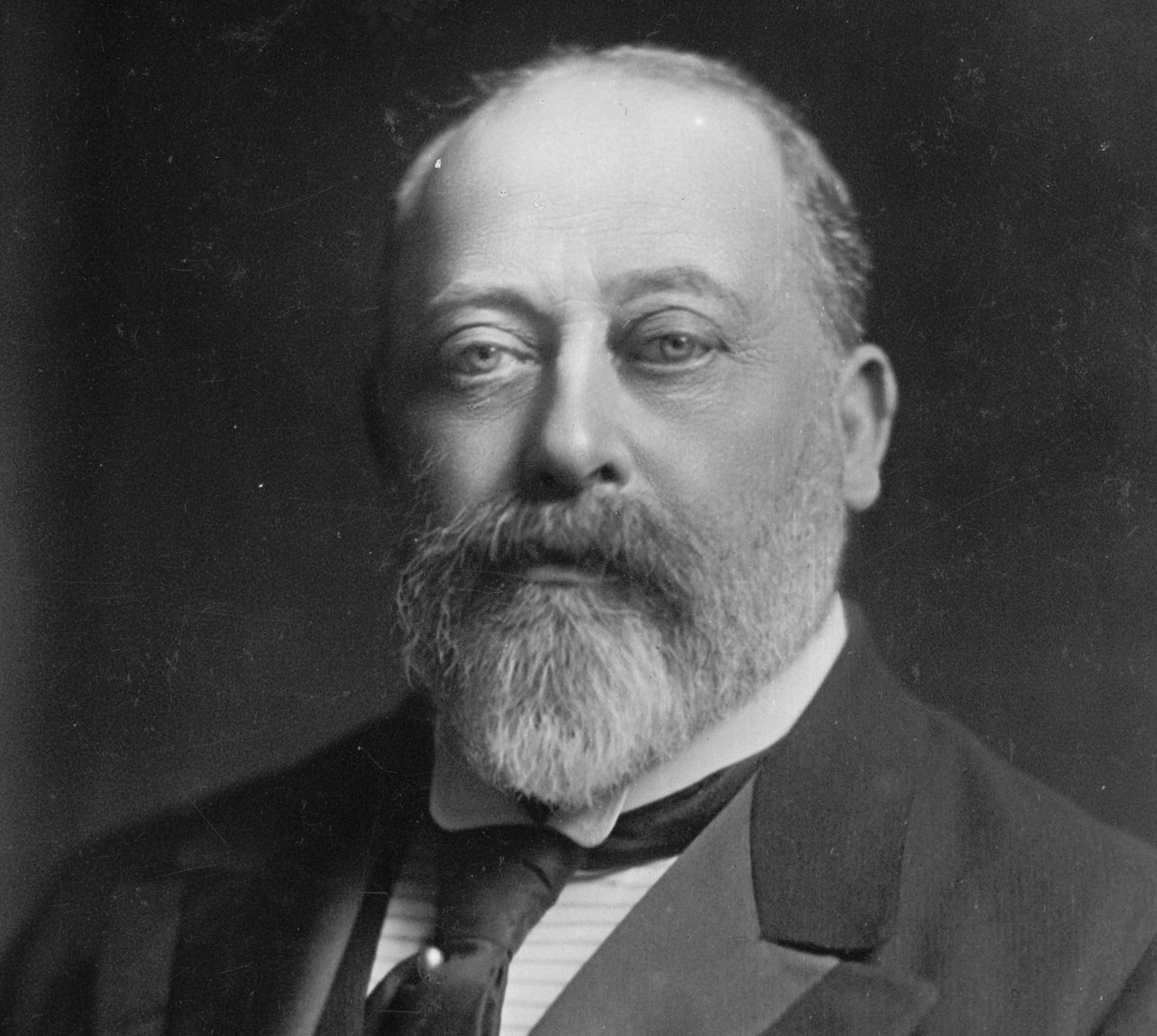 W. & D. Downey, Wikimedia Commons
W. & D. Downey, Wikimedia Commons
Edward VII’s Wild Affairs
Edward VII had a secret affair with Winston Churchill's mother—and his letters reveal their sordid activities in the bedroom. Edward used to write to Lady Randolph Churchill asking if he could come over for "Japanese Tea" and "entertainments." That might not sound too saucy—until you realize what he meant by "Japanese Tea”.
It involved Churchill serving Edward tea wearing nothing but an extremely loose-fitting kimono.
 W. & D. Downey, Wikimedia Commons
W. & D. Downey, Wikimedia Commons
George V
Though Britain mourned when George V quietly passed in his sleep, it felt as though his time had come—but nothing could be farther from the truth. His doctor actually sped up the process by giving George lethal doses of two medications that are now considered illicit substances. And the reason why was utterly deranged.
 W. & D. Downey, Wikimedia Commons
W. & D. Downey, Wikimedia Commons
George V’s Punctual Passing
The doctor wanted to make George’s passing go faster so that the news would break in time to be published in the morning papers. He thought that having it covered in the evening papers would be “less appropriate”.
 Bassano Ltd, Wikimedia Commons
Bassano Ltd, Wikimedia Commons
Edward VIII
Edward VIII might seem like the picture of passion, giving up the crown for love. However, despite that one incident, he was an exceedingly cold man. When Edward VIII’s baby brother Prince John passed on after a severe seizure at only 13 years old, Edward’s response was ruthless.
 British Library, Wikimedia Commons
British Library, Wikimedia Commons
Edward VIII’s Even Darker Side
Edward referred to John’s passing as “little more than a regrettable nuisance”. Edward was also so savage to his mother about her loss that he later apologized for being “a cold-hearted and unsympathetic swine”.
 Angelo Laviosa, Wikimedia Commons
Angelo Laviosa, Wikimedia Commons
George VI
Though George eventually became well regarded for leading England through WWII, his conduct early in his reign has been called "the most unconstitutional act by a British sovereign in the present century.”
 Walter Stoneman, Wikimedia Commons
Walter Stoneman, Wikimedia Commons
George VI’s Brutal Mistake
Before Winston Churchill, Neville Chamberlain was the Prime Minister, and he supported appeasement of Adolf Hitler and his party in Germany. George initially supported Chamberlain’s plan, and it remains a dark stain on the history of his rule.
 National Archives and Records Administration, Wikimedia Commons
National Archives and Records Administration, Wikimedia Commons
Elizabeth II
Not long before Queen Elizabeth II's passing, her aides revealed that she used a set of secret signals with them during her diplomatic visits. When she wanted to leave a conversation, she twisted her wedding ring. When she was at dinner, she put her handbag on the floor to convey the same message. And if she put her bag on the table? Watch out. That meant that her staff had five minutes to end the event.
 Cecil Beaton, Wikimedia Commons
Cecil Beaton, Wikimedia Commons
Elizabeth II’s Fashion Dos And Don’ts
Meghan Markle’s wedding dress reportedly scandalized Queen Elizabeth II—for one obvious but little-known reason. Markle's elegant dress was white, and since she is a divorcee, the Queen was disappointed the bride didn’t pick a different color.
 Julian Calder, CC BY 4.0, Wikimedia Commons
Julian Calder, CC BY 4.0, Wikimedia Commons
King Charles III
Charles III doesn’t lack in the diplomacy and tact department—but everyone makes mistakes at some point. When musician Ozzy Osborne fell ill in 2003, then-Prince Charles sent him a get well present of a bottle of Scotch. There was just one problem: Ozzy is a recovering alcoholic and doesn’t drink.
 HM Government, Wikimedia Commons
HM Government, Wikimedia Commons
King Charles III’s Lineage
Obviously, Charles is related to all the monarchs on this list—but he’s also a distant relative of Vlad Tepes, AKA Vlad the Impaler—the inspiration for Bram Stoker’s Dracula.
 White House, Wikimedia Commons
White House, Wikimedia Commons












